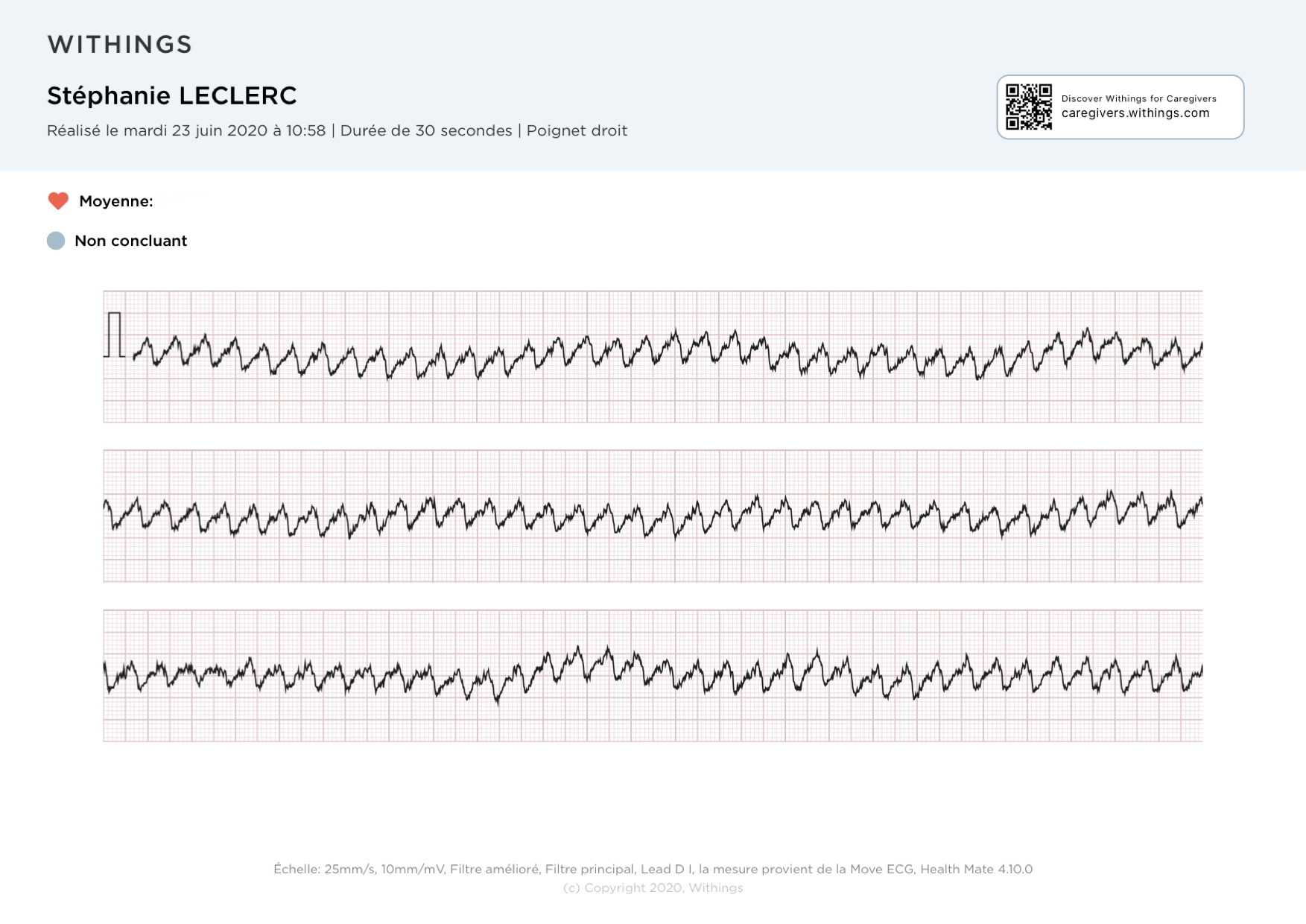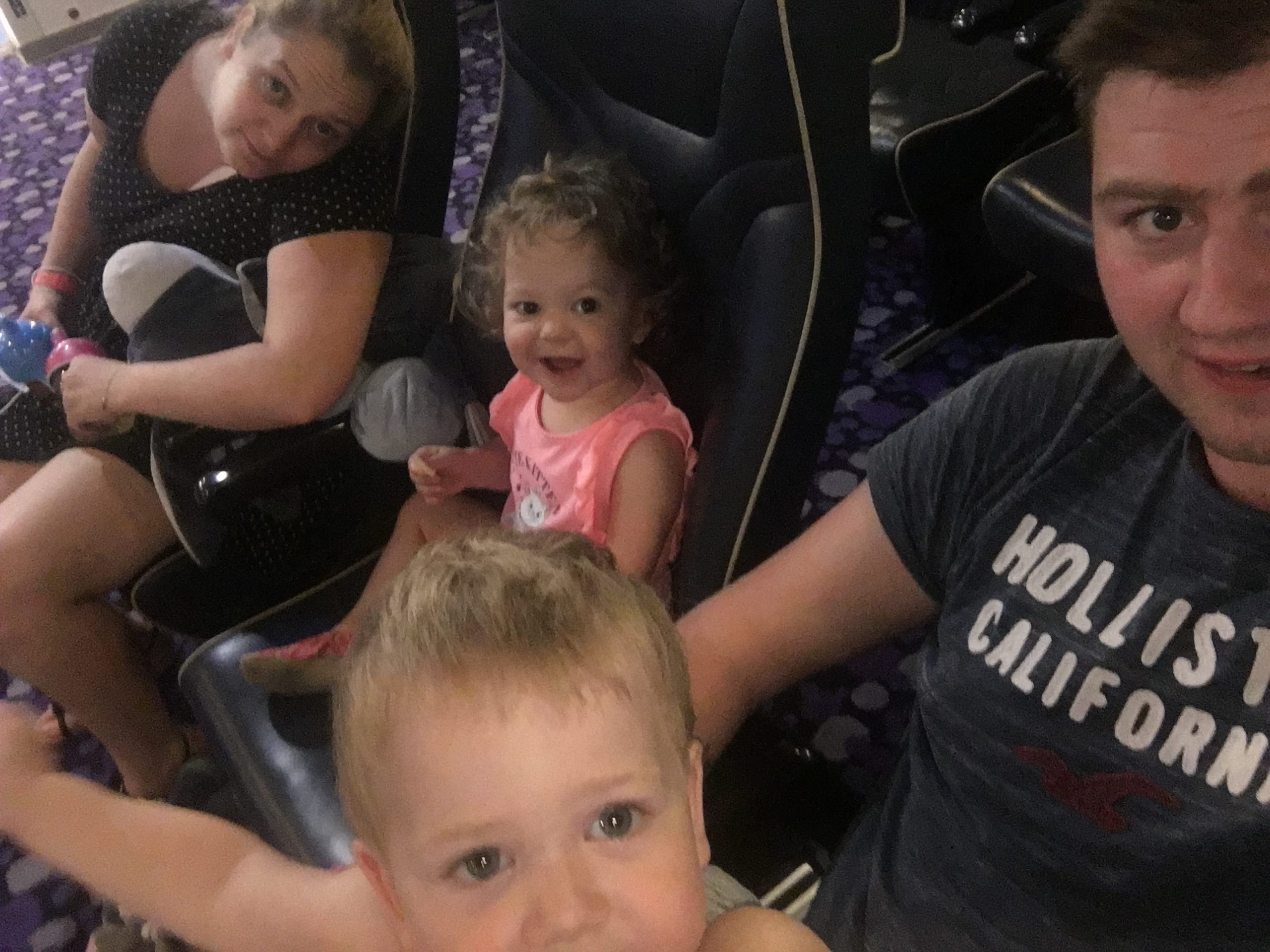
Find out how this young mother of twins may have saved her life after showing a cardiologist an ECG taken with her Withings watch.
Stephanie Leclerc, 31, lives in the countryside of Western France, between Poitiers and Angoulême. An accountant by training, she is currently taking a break from her professional life to take care of her children and recover from the health scare she experienced.

An anxious temperament
Stephanie readily admits that she is rather anxious. Between the ages of 20 and 23, she had several anxiety attacks after being diagnosed with ventricular extrasystoles, a type of cardiac arrhythmia, which were declared benign by the cardiologist she consulted. Three years ago, her twins were born at only 6 months of pregnancy and spent many months in the hospital. “At that point, my anxiety attacks came back. I stayed with them at home for a year after they were born. It made me think a lot and think about my anxieties.”
In February 2020, she had several small ailments (without her knowing why) and then in April 2020, she started experiencing tachycardia, which means her heart beats too fast, too hard in situations where it shouldn’t. “It happened for less and less valid reasons. Sometimes it was as simple as me getting off the couch or bending down and getting up.”
Expanding the detection window
Stephanie decided to go to counseling. “From April to July 2020, I went to several cardiologists who told me it was just stress because I never had an episode in their office. My primary care physician then advised me to buy a smart watch so I could see what was going on when I had an episode. I bought a Move ECG because it takes an ECG and you can review the recordings. After I bought it, the doctors told me that the watch didn’t work well because my pulse was going over 220 bpm during my episodes. It was very difficult not to be believed.”
Fortunately, she eventually met with a cardiologist who is used to working with smart watches. This one took the young woman’s symptoms and the watch’s indications seriously. She sent her directly to the hospital, where she was observed for two days in cardiac resuscitation before having another attack. “On the table, I went up to 260 bpm! Once they observed the problems, they performed a cardiac ablation right away. They applied heat to the parts that were preventing the heart from functioning properly.”

Women’s hearts
Today, Stephanie remains under the watchful eye of doctors even though she is, in theory, cured. She remains very scarred by what she experienced. “I had a cardiac holter and a stress test last February. I have to do them regularly. I was told that if the tachycardia came back, I might need an internal defibrillator. I’m very concerned about that. I’m always afraid it will happen again. Plus, I have a hard time trusting doctors as they told me for a long time that the watch was unreliable and that what I had was benign when it wasn’t at all!”
Stephanie is probably not an isolated case. “As I was telling my story to the woman who was giving me my stress test, she got angry and told me that if I had been a man, it wouldn’t have happened like that and they would have taken my situation more seriously. She sees a lot of women come by who are told it’s stress when it’s not.”
In reality, cardiovascular diseases (CVDs) are the leading killer globally, and the number one killer of women, which is why Withings has partnered with the American Heart Association’s Life is Why campaign in the US, as well as a French charity called Agir pour le Cœur des femmes to help enable early detection of CVDs in women. If you’re a woman, take care of yourself. If you are a man, take care of their hearts—and your own!
Thank you to Stephanie for her story, and for the trust she placed in us.


